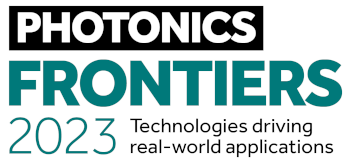Scientists at the Swiss Federal Institute of Technology in Zurich, Switzerland, are using a CMOS camera to study the response of automotive sheet metal to gross deformities that occur during forming and crashes.
The researchers developed a novel axisymmetric V-bending device that identifies and measures the weakest direction of fracture strains in different types of sheet metal.
‘Plane strain’ tension is one of the most critical loading conditions leading to ductile failure during metal forming and car crashes. Therefore, knowing the fracture strain and weakest orientation for stress is very crucial for the safe use of sheet metal in automobile design.
In most plane strain tension fracture experiments, metals are tested in one orientation at a time, hence several tests with different orientations have to be performed. The new CMOS approach tests all orientations at once and determines which orientation has the lowest fracture strain under plane strain tension.
Using their new device, the scientists performed experiments on two widely-used aluminium alloys and two types of steel. Disc-shaped samples of the different metals were bent over a tubular knife with a diameter of 54mm. Pressure load was applied by a 250kN electro-mechanical testing machine with a crosshead speed of 2mm/min.
To allow for the digital image correlation (DIC) necessary for analysis, a random pattern with a white background and black speckles was applied to the metals. An SVS-Vistek hr25CCX CMOS CoaXPress camera equipped with a 55mm f2.0 lens was used to take images of the test at 2fps and a spatial resolution of 14μm/pixel. An LED ring light was mounted on the lens, evenly lighting the whole specimen surface during the experiment. Images from the experiments were processed with VIC-2D DIC software to measure in-plane full-field displacements and strains. Strain fields were computed using a Gaussian filter.
The CMOS camera took images of the entire top surface of the metal specimens throughout the experiment, allowing for timely crack detection and strain measurements correlated against the images. The set-up probed all material directions in one single experiment and determined the least ductile material orientation for low strain, therefore saving time without compromising analysis quality.




